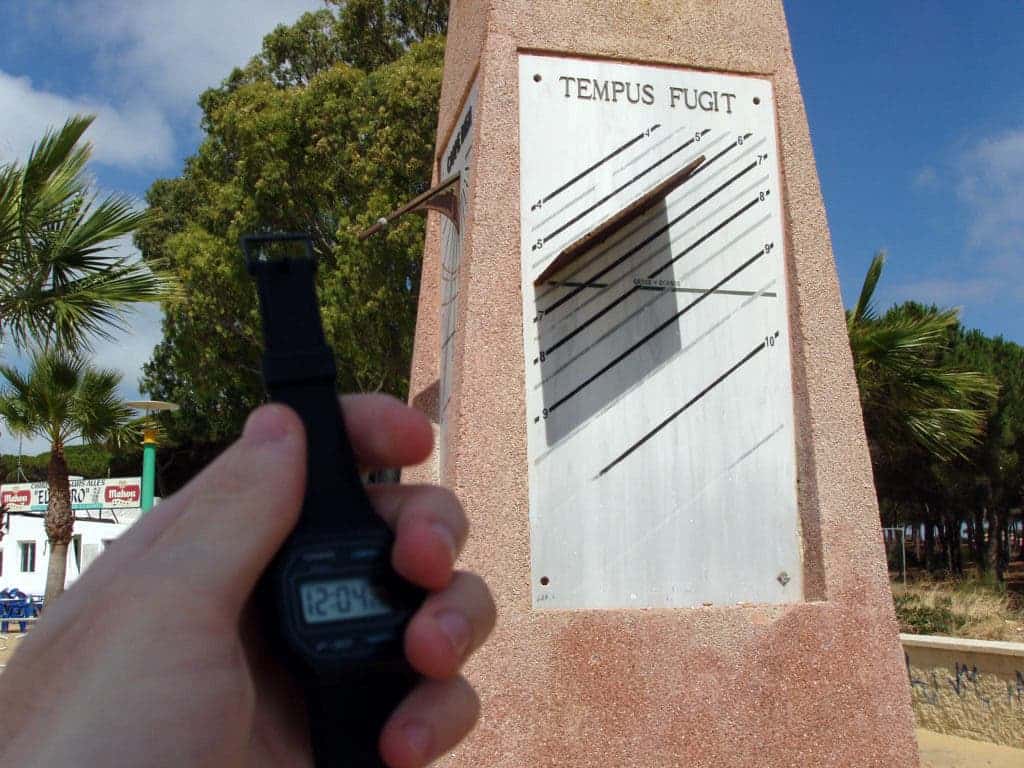Language can have a powerful effect on how we think about time, a new study found. The link is so powerful that switching language context in a conversation or during a task actually shifts how we perceive and estimate time.

I think we all like to consider our minds as being somehow insulated from the going on’s around us. That we take comfort in knowing it will absorb, process, and respond to external stimuli in a calm, efficient, but most of all consistent fashion. Maybe it comes down to the sense of immutable truth our reasoning is imbued with if we assume that it’s rooted in a precise and impartial system — in a chaotic world, we need to know that we can trust our mind. A view which is a tad conceitful, I’d say, since it’s basically our mind telling us what to believe about itself.
And it’s also probably false. Professors Panos Athanasopoulos, a linguist from Lancaster University and Emanuel Bylund, a linguist from Stellenbosch University and Stockholm University, have discovered that our perception of time strongly depends on the linguistic context we’re currently using.
Doublespeak
People who are fluent in two (bilinguals) or more (polyglots) languages are known to ‘code-switch’ often — a rapid and usually unconscious shift between languages in a single context. But each language carries within it a certain way of looking at the world, of organizing and referring to things around us. For example, English speakers mark duration of events by likening them to physical distances, e.g. a short lecture, while a Spanish speaker will liken duration to volume or amount, e.g. a small lecture. So each language subtly ingrains a certain frame of reference for time on its speaker.
But bilinguals, the team found, show a great degree of flexibility in the way they denote duration, based on the language context in use. In essence, this allows them to change how the mind perceives time.
For the study, the team asked Spanish-Swedish bilinguals to estimate the passage of time or distance (distractionary task) while watching a screen showing either a line growing across it or a container being filled. Participants reproduced duration by clicking the computer mouse once, waiting the appropriate time, and clicking again. They were prompted to do this task either with the word ‘duración’ (the Spanish word for duration) or ‘tid’ (the Swedish term). The containers and lines themselves weren’t an accurate representation of duration, however, but were meant to test to what extent participants were able to disregard spatial information when estimating duration.
The idea is that if language does interfere with our perception of duration, Spanish speakers (who talk about time as a volume) would be influenced more by the fill level of the containers than their Swedish counterparts (who talk about time as a distance), and vice-versa for the lines.
And it did

The team recruited 40 native Spanish and Swedish bilinguals each and had them run three variations of the test. The first one found that Spanish native speakers were influenced to a greater extent (there was a wider discrepancy between real and perceived time) by the containers than the lines (scoring an average 463-millisecond discrepancy vs the Swedes’ 344 ms). Native Sweedish speakers were more influenced by the lines than the containers (scoring 412 discrepancies vs their counterparts’ 390 ms discrepancies).
The second test again included 40 of each group and found that in the absence of the Spanish/Sweedish prompt words, the team “found no interaction between language and stimulus type, in either the line condition or the container condition. […] both language groups seemed to display slightly greater spatial interference in the lines condition than in the containers condition. There were no significant main effects.”
The third test included seventy-four Spanish-Sweedish bilinguals who performed either the line or container task. The team removed the distractor task to reduce fatigue and alternated between the prompt languages. Each participant took the experiment twice, once with Spanish and once with Swedish prompt labels. The team concludes that “when all stimuli were analysed,” there were “no significant main effects or interaction” either in the distance or time task — meaning both groups were just as accurate in estimating time or distance regardless of language.
“Our approach to manipulate different language prompts in the same population of bilinguals revealed context-induced adaptive behavior,” the team writes. “Prompts in Language A induced Language A-congruent spatial interference. When the prompt switched to Language B, interference became Language B-congruent instead.”
“To our knowledge, this study provides the first psychophysical demonstration of shifting duration representations within the same individual as a function of language context.”
Exactly why this shift takes place is still a matter of debate: the team interprets the finding in the context of both the label-feedback hypothesis and the predictive processing hypothesis, but mostly in technical terms for other linguists to discern. For you and me, I think the main takeaway is that as much as our minds shape words so do words shape our minds — texturing everything from our thoughts to our emotions, all the way to our perception of time.
The paper “The Whorfian Time Warp: Representing Duration Through the Language Hourglass” has been published in the Journal of Experimental Psychology.
Editor’s note: edited measured discrepancy for more clarity.



